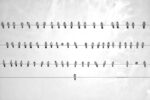Artistic, Collective, Metropolitan. Warsaw art studios as micro-institutions
Art studios are unique spaces on the city map that are largely hidden from the public. It is impossible to estimate the exact number of art studios located in Warsaw, but our modest calculations suggest that there are at least 500 and likely many more. Artists, working mostly as freelancers, are on their own when it comes to organising their workspace, creating, and storing their work. While some artists rent dedicated premises from the district Property Management Divisions, others work in premises they rent or sublet from private individuals. Municipal programmes, which in theory aim to facilitate access to premises allocated for creative studios, operate on an auction basis, but in reality, the auctions are usually won by people producing craft products for sale. At the same time, since 2014, there has been a positive change in the city of Warsaw’s policy, related to a greater recognition of the value of art studios as micro-institutions, and a declared intent to preserve the legacy of distinguished artists by granting their studios the status of a Historic Art Studio. Historic and contemporary studios are key places for the production of art, building social ties, establishing collaborations, telling stories and taking care of artworks and archives, ensuring the continuity of the exchange of practical and theoretical knowledge. From there, works of art find their way to private galleries and public institutions, where they help shape the artistic image of the city and the entire country. The “Artistic, Collective, Metropolitan” project is an attempt to take a look at both municipal policies and the needs of Warsaw-based artists to see if and to what extent they resonate with each other. Our aim is to create tools for dialogue between the seemingly distant but, in fact, mutually influential aspects of urban life, namely the administrative and the artistic aspects.
Curators



Activities held in community culture centres
The activities held in the community culture centres in Warsaw were dedicated to the cooperation between artists and the district art education centres – in this case between the Wolski Culture Centre and Martyna Modzelewska, and between the Praga Culture Centre and Weronika Zalewska. The activities of the people who run these workshops stem from the needs of those attending these workshops. When reflecting on these activities, we asked ourselves how can artists contribute to the creation of a community culture centre and organise activities that flow organically from its policies and at the same time meet local needs? The aim of this part of the project was to demonstrate the potential of collaboration between artists and community culture centres, a strategy that some of these centres have been pursuing for quite some time.






